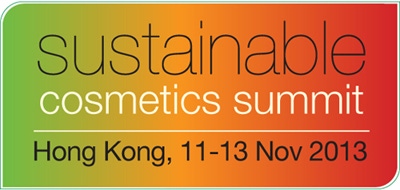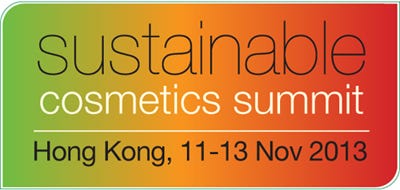Does cosmetic packaging need a makeover?
January 30, 2014


Sustainable Cosmetics Summit
Cosmetic companies are making slow progress in reducing their packaging footprints. Although the cosmetics industry has become preoccupied with green initiatives, few steps have been made to tackle the environmental impact of packaging.
Organic Monitor (www.organicmonitor.com) research finds most developments are occurring in ecodesign, with many brands reducing packaging materials by changing design structures. The Brazilian company Natura Brasil is a frontrunner in sustainable design. Its recent launch of its mass market SOU brand epitomises the packaging trend. SOU skin care products are housed in flexible packaging that have 70 percent less plastic than rigid plastic containers of the same volume.
As will be shown at upcoming editions of the Sustainable Cosmetics Summit (www.sustainablecosmeticssummit.com), most changes in packaging design are only leading to an incremental decrease in packaging materials. In some cases, any ecological benefits from less packaging material are offset by higher unit sales. More radical solutions involving materials are necessary to make significant changes to the packaging impact of cosmetic products.
Relatively few developments are occurring in packaging materials. Although some cosmetic brands are experimenting with sustainable materials like bamboo and wood, plastic packaging still prevails. High raw material costs and inadequate waste disposal methods give plastic packaging a very high environmental footprint. According to the OECD, packaging comprises over half of all household waste in developed countries, with plastics having most effect in landfill.
Plant-based plastics, once hailed because of their biodegradable nature, have yet to make headway in cosmetic applications. Some companies like Procter & Gamble are using hybrid polymers to overcome the limitations of bioplastics. Its Pantene Pro-V Nature Fusion packaging is mainly made from biopolymers sourced from sugar cane.
Unilever is one of the few companies considering a packaging overhaul to address its environmental footprint. The Anglo-Dutch multinational introduced a new ‘compressed' can for a number of its deodorant brands earlier this year. The deodorant cans are about a third smaller, reducing packaging material costs as well as transportation costs. However, few companies have managed to innovate with green packaging.
There are also calls for the cosmetics industry to take some responsibility for waste management. In Brazil, the cosmetics association ABIHPEC is working with municipal agencies to collect and recycle packaging waste. In the US, Tom's of Maine has partnered with Teracycle to collect its packaging waste and use it in new product applications. A closed loop system whereby waste is used as raw materials is considered the way forward for many cosmetic brands taking the green road.
Sustainable packaging is a focal theme of the upcoming Latin American and European editions of the Sustainable Cosmetics Summit. Discussion topics include environmental impact of packaging, ecodesign innovations, novel packaging materials, bioplastics in cosmetics, and green packaging success stories; papers will be given by Natura Brasil, Procter & Gamble, Unilever, Arkema, Selerant, Aptar, ABIHPEC and other organizations involved in sustainability.
Source: Organic Monitor
.
About the Author(s)
You May Also Like


